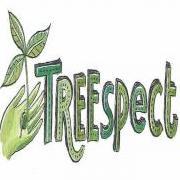Howoldisit?When a tree is growing in average conditions, its girth may be a guide to whether it is ancient or not.
Consider the largest girth of the species of tree (see chart below) and relate it to that. There is a way of
estimating the age of a tree – see White, 1998. However, always bear in mind that soils, altitude, climate,
growing conditions and whether the tree has been pollarded (cut repeatedly through part or all of its life) can
affect the rate at which the tree grows so this method can only be used as a guide to ageing a tree. Ancient trees
growing in environmentally challenging places like the uplands may be signif icantly smaller.
The more we look at trees in different growing conditions, the more we learn about tree girth as a guide to
separating ‘ancient’ from ‘veteran’ and ‘notable’ trees. We have provided a provisional guide to typical girths of
some common tree species growing in average conditions, but as we gather more data we may need to adjust the
ranges.
Key characteristics* of an ancient tree
• Crown ‘growing downwards’ or flattening
(in conifers) through the ageing process
What is a veteran tree?
Veteran is a term describing a tree with habitat
features such as wounds or decay. The terms ancient
and veteran have been used interchangeably in the
past, however, it is important to know what the
differences between them. A veteran tree is a
survivor that has developed some of the features
found on an ancient tree, not necessarily as a
consequence of time, but of its life or environment.
Ancient veterans are ancient trees, not all veterans
are old enough to be ancient. A veteran may be a
young tree with a relatively small girth in contrast
to an ancient tree, but bearing the ‘scars’ of age such
as decay in the trunk, branches or roots, fungal
fruiting bodies, or dead wood. These veteran
features will still provide wildlife habitat.
thanks for taking the time for posting phenom. These trees bear many marks associated with the term 'veteran'.....cavities, flaking bark, cracks, hollows....they are surely vets in their own way as providing all the hallmarks necessary for wildlife habitat?























